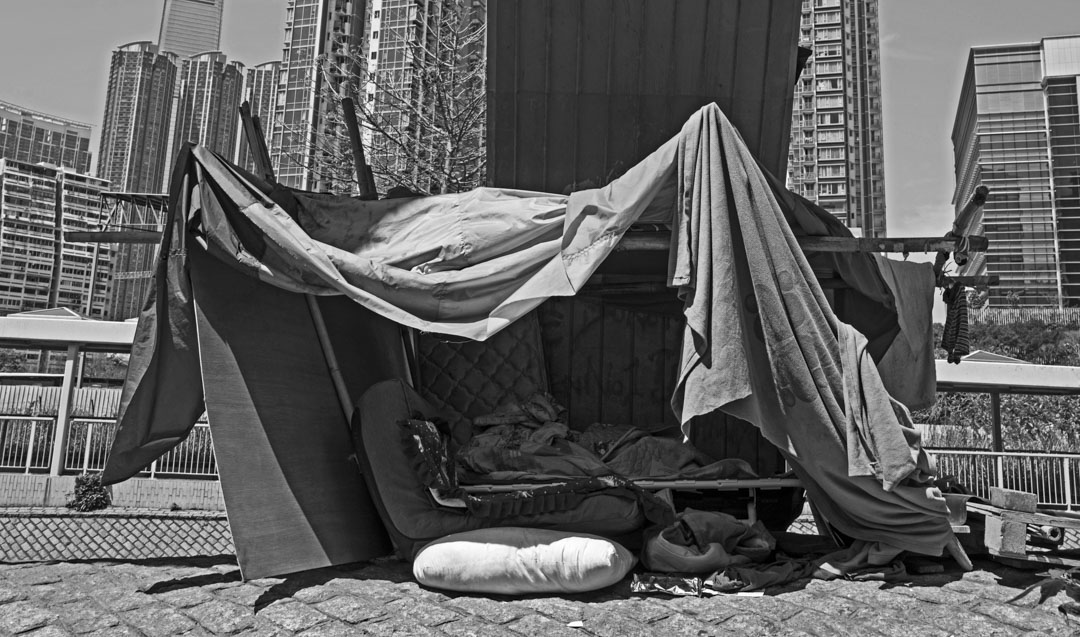藝術議題
- 威尼斯雙年展最新的專題文章如下。如欲閱讀有關同一議題的其他文章,可再點擊右下角資料庫的年份和月份。
Time for compassion
約翰百德 (John BATTEN)
at 5:41pm on 25th July 2019

圖片說明 :
《無家者生活誌》攝影集封面圖片。攝影:雷日昇
Caption:
Book cover of Life Stories of the Homeless, with photographs by Lei Jih-sheng.
(原文以英文發表,題為〈憐憫時刻〉。)
Hong Kong should take a leaf from Taiwan’s book when it comes to helping the homeless.
On my way to last month’s opening of the Venice Biennale, I flew into Rome from Hong Kong, arriving early in the morning. I would later catch an afternoon train to Florence and the time in Rome allowed me to stretch my legs after the long flight and spend a few hours at the wonderful Museo Nazionale Romano, conveniently located next to Rome’s main train station. Inside the museum are holdings of Roman archaeological treasures found in excavations after the 1880s, during the construction of newer urban buildings. Many of the Roman sculptures found and displayed are copies of earlier Greek sculptures extolling the ideals of beauty, athleticism, military leadership and intellectual refinement (philosophers are depicted with bushy beards). It is a superb museum and rarely visited by tourists.
As I walked near the train station, across from the museum, and around the adjacent piazza were the belongings of homeless people. Train stations around the world are favoured places for the homeless to stay. Stations, and similar places – such as the Hong Kong Cultural Centre in Tsim Sha Tsui – offer a kind of safety. They are busy places with people coming and going throughout the day and night; and with people around, potential trouble is reduced. The architecture of stations provides open public spaces with shelter: often covered areas and corridors built to provide the public with shelter during inclement weather, and useful to the homeless. The homeless are generally ignored in Hong Kong, both by the public and government officials. However, confiscation of possessions left in public areas by street cleaners of the Food and Environmental Health Department, or theft by others, can cause the greatest anxiety for the homeless: those few possessions are all they have.
Recently, the Society of Community Organization (SoCO) mounted its latest exhibition in the Cultural Centre about homelessness. Paired with photographs by Lei Jih-sheng are a series of poignant stories. Each homeless person has a personal setback that often involves drugs, marital breakups and health or psychiatric issues. A surprisingly high number blame gambling as the start of a downward spiral that resulted in leaving home and families, usually to escape loan sharks.
To mount this exhibition, SoCO teamed-up with Taiwan Homeless, a similar charity working with the homeless in Taiwan. Unlike Taiwan, Hong Kong has no single government department responsible for the homeless. Consequently, there is no urgency to improve the lives of Hong Kong’s homeless. However, in Taiwan solutions to homelessness are often found: for example, a homeless person can deposit their possessions in a safe holding place (similar to a left-luggage facility) on a daily basis, reducing the fear of losing possessions and the ordeal of always needing to carry possessions with them.
We are just like the Romans: honouring success and achievement; but compassion, often through kindness and charity, has also been a virtue in most societies. In Florence, Europe’s first orphanage was operated by the Hospital of the Innocents – funded by the city’s wealthy silk merchants. They were progressive and gave architect Filippo Brunelleschi his first commission in 1419 to build the hospital. His design, with its distinct loggia inspired by classical Roman architecture, is arguably the first building of the Renaissance.
Couldn’t we be equally progressive in making the lives of the homeless easier?
Life Stories of the Homeless is published by SoCO, with photographs by Lei Jih-sheng. soco.org.hk
This article was originally published in Perspective architectural magazine, June 2019.
原文刊於Perspective, 2019年6月。
